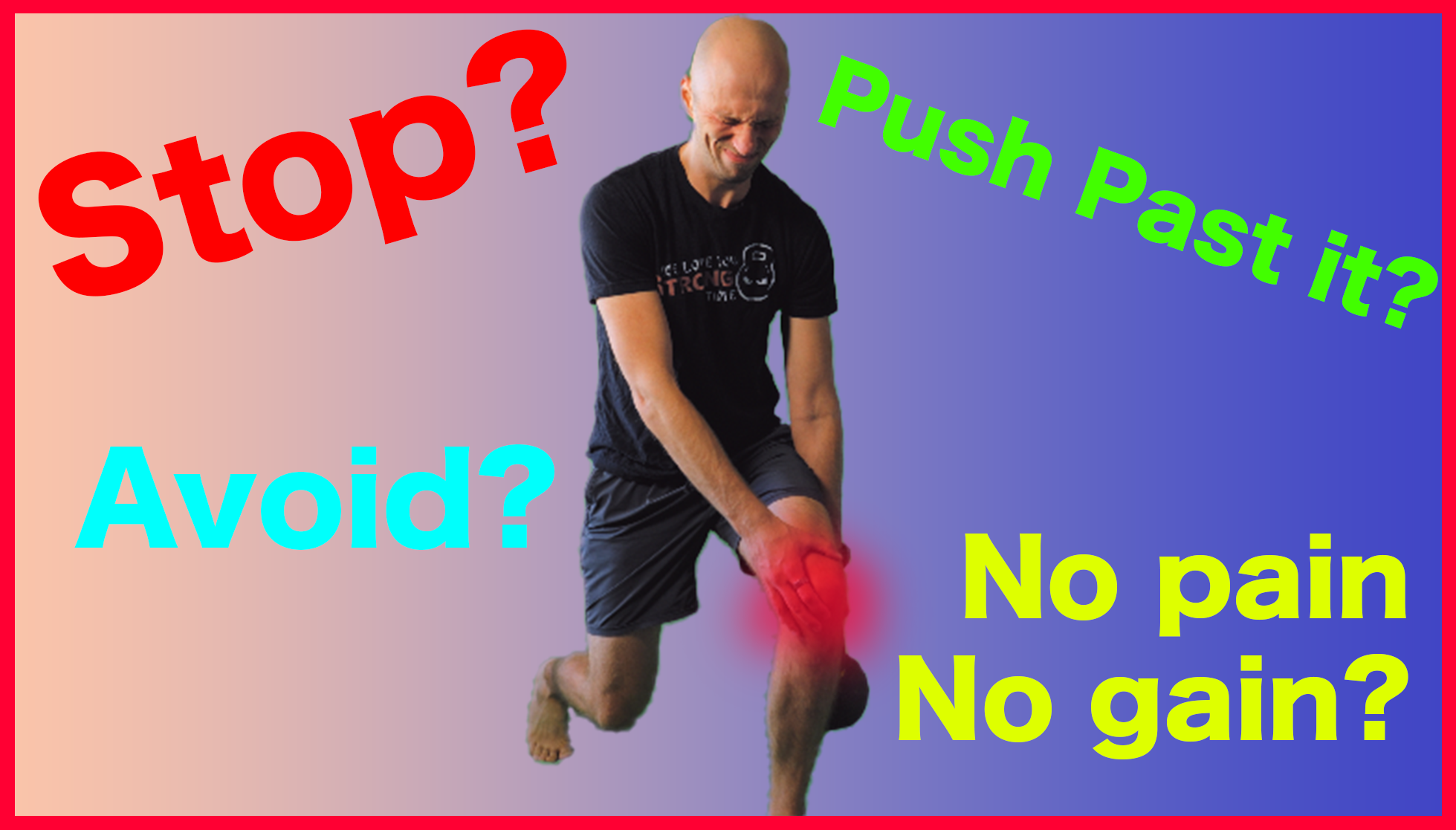Table of Contents
Should you stop, work through it, or do something else?
If you or your clients are in persistent pain and trying to get back in the gym, do you ever wonder if it’s okay to hurt while you work out? Should you be completely pain-free?
I’ll answer that for you today.
You are about to get a comprehensive guide that I successfully implement with my clients on this exact issue. Every possibility you could run into answered.
You’ll learn what is considered a normal pain response, how to navigate pain within a workout, and if hurting after the fact is a bad thing.
If you want the complete guide, check out the video, podcast, and post below.
How to increase your pain threshold
Dealing with pain during exercise can be quite frightening, but there are certain steps one can take to ensure pain flare-ups and re-injury are minimized.
Before I give you the details, there are a few caveats:
- Get medically cleared to exercise, especially with acute injuries (not medical advice)
- This does not apply for delayed onset muscle soreness (DOMS), which is normal workout soreness in muscles. Exercising through this can actually help reduce soreness
- This process is best for someone in persistent/chronic pain who has had major structural issues ruled out
With that in mind, you can think of improving pain tolerance much like getting stronger at the bench press.
If you want to get stronger at the bench-press, you have to continue to add more weight and train frequently, so your body adapts.
If you are someone who never benches, or bench so hard that you must take several days off between workouts, or you never add weight, you won’t get stronger.
The same framework applies to increasing pain-free activity (which I’ve adapted from the awesome book Explain Pain).
If you are someone who uses the “if it hurts, do not do it” strategy, one who minimizes/eliminates activity to a high degree, your body will become deconditioned. When this happens, your pain system recognizes that you lack the physical preparedness to do many tasks. In effect, the pain threshold will be lower, resulting in easier activities causing pain.
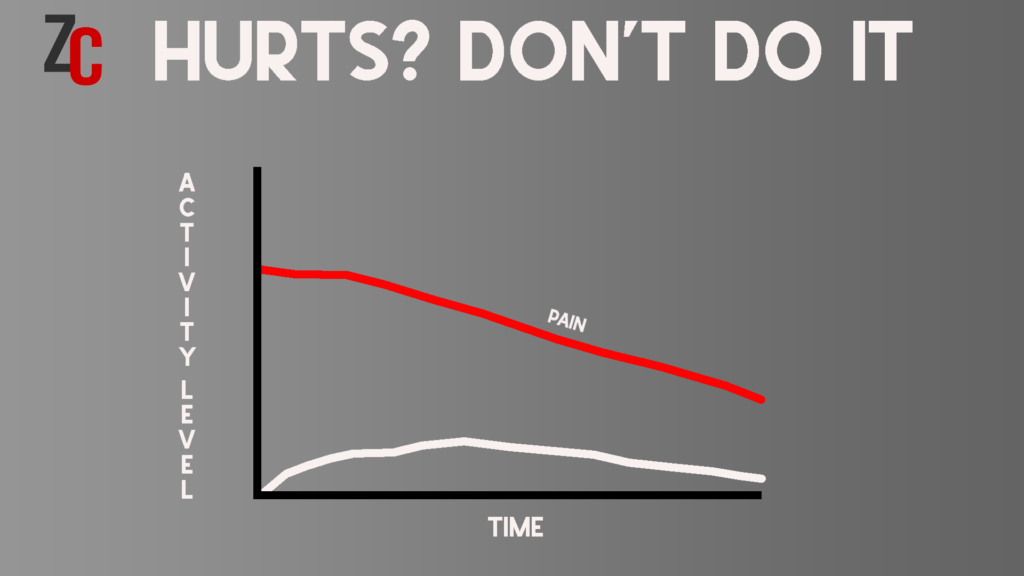
Conversely, some people push well beyond their pain threshold. You know, the person who has to get this DONE or “pain don’t hurt.” These are the “no pain, no gain” crowd. These people experience pain, push well beyond the limit, cause a major symptom flare-up, and must take several days to recover.
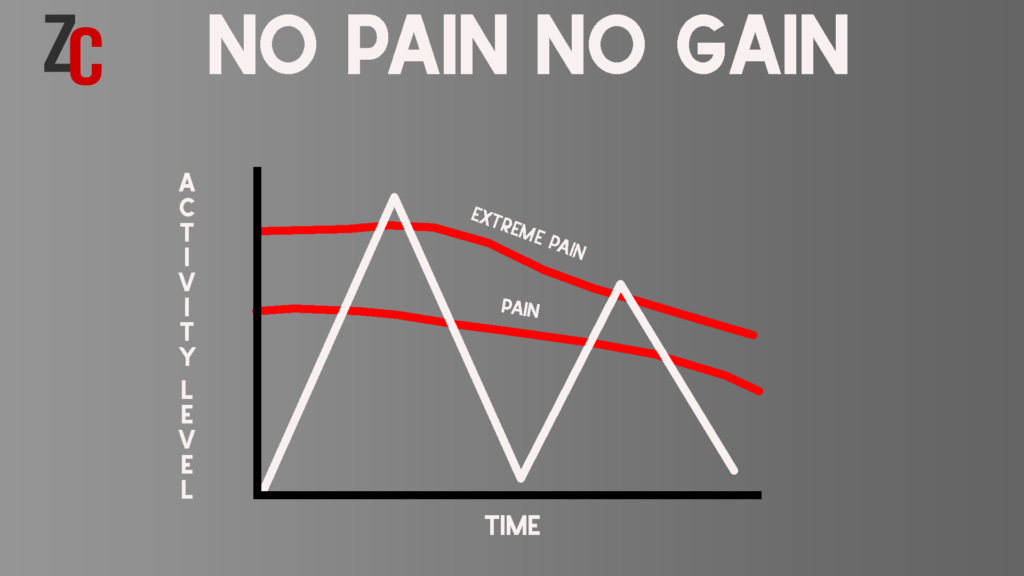
When so many days are taken off, the body can’t improve conditioning levels due to inadequate movement frequency. You run into the same problem of the “if it hurts, do not do it” camp.
The third group is what I like to call the “play it safe group.” These might be the people who have found an adequate amount of activity that they can do or have workarounds for various tasks.
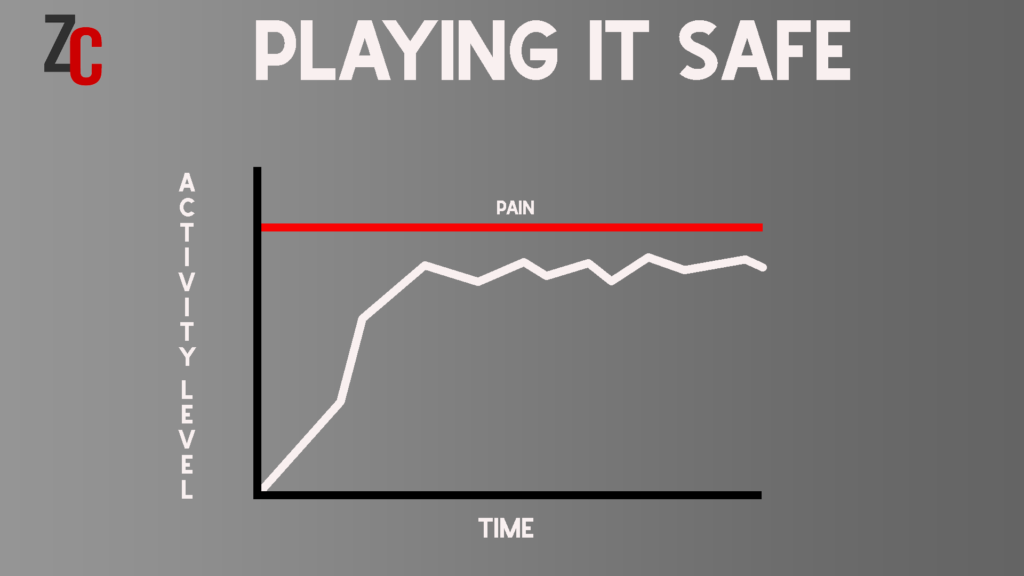
While there’s nothing wrong with this group, the stagnation risk is high. They may NEVER get back to the activities they had hoped to achieve. And that’s because they never push their limits. They stay at the status quo.
If you are someone who wants to improve your pain-free activity levels beyond your current capabilities, then you require a different strategy. One that pushes you safely past the threshold.
So, how do we do that in a manner that minimizes flare-ups and complications?
The answer is: “The House of Pain”
And no, I am not talking about Tyler Perry or start playing “Jump Around”.
Instead, I’ll give you an analogy to illustrate how we can improve your activity tolerance without exacerbating pain symptoms.
If you can think of pain like a house, what you want to do is knock on the door of that house. You do not want to bust it down. That is the “no pain, no gain,” strategy, but you also do not want to just play on the lawn, “if it hurts, do not do it.”
We want to find a middle ground. That means hovering around the pain barrier, just like pushing your bench press limit.
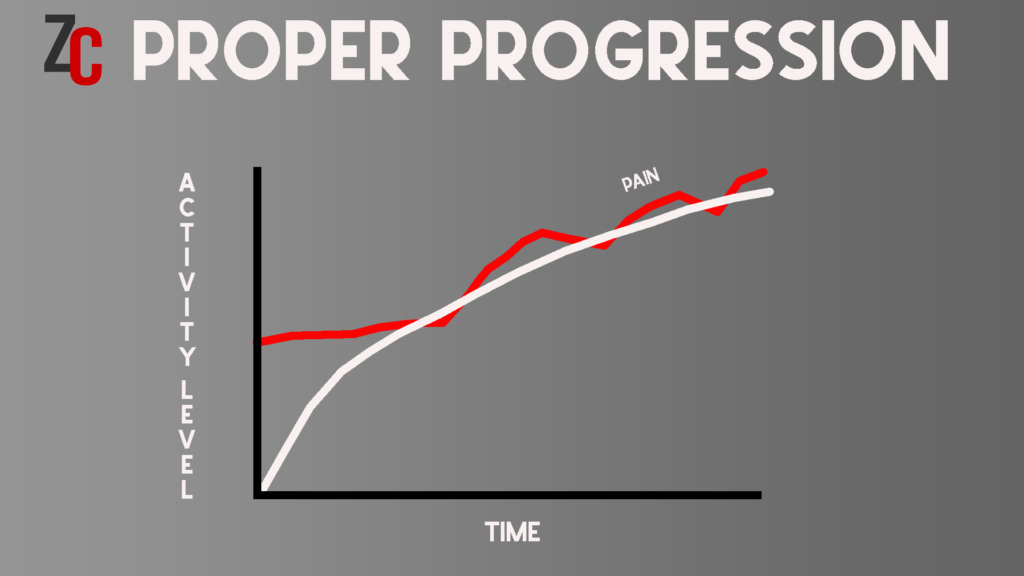
When you do this, the body recognizes that you tried this before and were safe. Physiological adaptations will occur, and the pain system will have a higher activity threshold before pain occurs—the goal.
How much pain is acceptable when working out?
With the above framework in mind, what is considered an acceptable amount of pain within a workout? What is considered a symptom flare up versus a normal response to exercise? That’s what we will talk about next!
Let’s first discuss pain within a workout. Suppose you are performing an exercise. There are four possible outcomes that could occur:
- Pain-free
- Pain in the beginning
- Pain towards the end sets
- Pain in subsequent day(s)
Let’s troubleshoot each of these possibilities.
Pain-free exercise
This one is kind of obvious. If you have no pain, then life is good. Move on. You can probably increase your activity level the next time.
Pain as soon as you start a movement
Suppose you do one set and immediately feel pain. What then?
There are a few different ways that we can tackle this specific problem.
- Make sure technique is on point
- Try the next set. It may be that your body is warming up to the exercise and you’ll feel okay on subsequent sets. Keep the weight and reps the same or slightly less.
If these tactics don’t work, then you want to stop that specific exercise for the day, and that is the key thing.
It may be that your body is just not used to that stimulus, and that is okay. A lot of times what I have found is it may just be a one-off bad day for reasons unknown. So, we do not want to just like completely quit the activity in question.
Try it again in a subsequent session and gauge your response. If you run through the above process again, you might be just fine.
Let’s say you do those two steps and there is still pain. Then is when you’ll want to change something. Pick one of the following variables to tweak:
- Reduce weight
- Reduce rep number
- Make the exercise easier
- Choose a different exercise that is less difficult
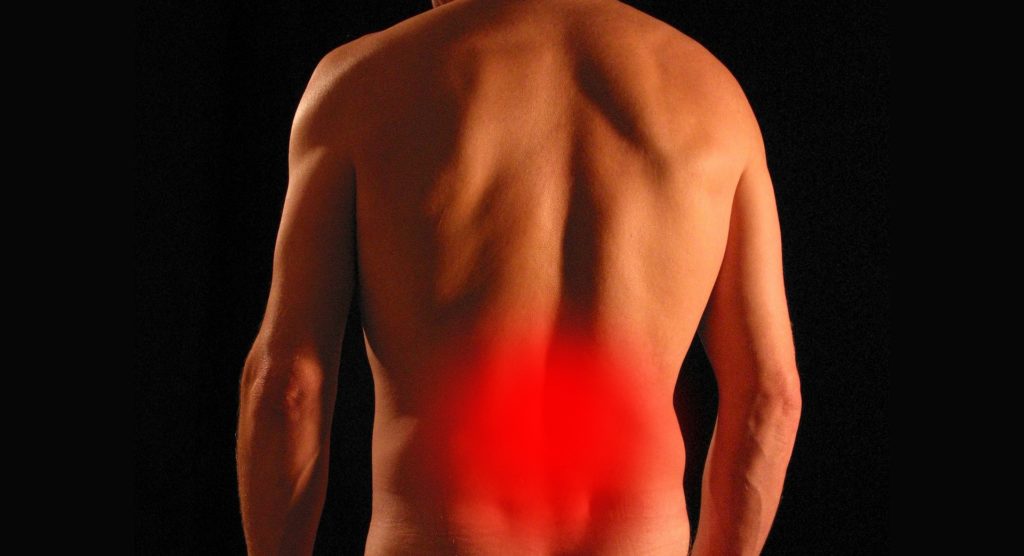
As you can see navigating pain is more of an experiment. We want the mindset of, “Oh, that is interesting, I wonder if I change this, or I wonder if I change that.” You try to modify the variables within your control, so that way, you do not just completely stop exercise. This is critical to increasing activity levels.
Pain in the end sets of an exercise
Let’s suppose the latter sets start becoming painful. SHOULD YOU STOP EXERCISING FOREVER OMG?!?!?!
No.
This scenario is likely due to fatigue. As the body fatigues, you get closer to the pain threshold, and some bells might be set off. No biggie. Fatigue is a homeostatic threat, and the body reacts accordingly.
So, if you start to experience pain towards the tail end of sets, that is totally normal. You just probably want to stop at that point in time because your body is done, and now here is the thing, you might still have reps in the tank, and that is okay.
Now you might be thinking “ Zac, I can continue to push past this, I know I got the strength, I know I got the endurance to do it, should I?”
No.
Because what we are talking about is not improving strength, we are not talking about improving endurance, we are talking about improving our response to pain. That is a different physiological adaptation that we are trying to acquire, and we want to respect that physiological adaptation.
So, if we want to try to do more exercise without experiencing pain, we must use pain as our guide.
You want to push to the point where that pain response fatigues, then adapts.

Pain in subsequent days after exercising
If you have pain after the workout, you have to ask yourself what the Red Hot Chili Peppers would ask you:
“How long how loooooong?”
Yes, fam. How long did you hurt afterward? What’s normal here?
If you have a pain response that is about 24 hours or less, this would be considered a normal response. It’s like delayed onset muscle soreness.
If this happens, what I would do is keep the volume (amount done) and intensity (difficulty, weight, speed, etc) the same for the next session.
If the next session is okay, then you’re likely safe to increase difficulty.
If you get the same response, it may be that you need a few go-rounds of that set and rep amount. So, we want to keep the same volume and intensity. It may be that our pain system just needs to get used to that response. Do this until you have no subsequent pain.
What happens if the pain lasts significantly greater than 24 hours?
In that case, the limit has been pushed, which is not uncommon.
If this happens, then what we want to do is we want to slightly decrease one variable. Meaning, you don’t stop exercising. You just make minor changes and re-gauge the response.
In fact, I’d go through a similar process that we did from experiencing pain during a workout:
- Reduce weight
- Reduce set number
- Reduce rep number
- Make the exercise easier
- Choose a different exercise that is less difficult
Sum up
That’s how you can increase your pain-free activity level. Don’t stop because you are hurt. Ramp up in a slow and safe manner.
To recap:
- Improving pain tolerance requires safely pushing the limit, just like any adaptation
- Pain early in an exercise can be improved by modifying technique and ensuring you are warmed up
- Pain at the end sets is likely a fatigue response
- Pain less than 24 hours long is normal
- Pain over 24 hours requires modification
If you thought this was an AWESOME post, I’ll do you one better.
I have this entire process in flowchart form.
All you gotta do is click the button below and I’ll send it right to you!

